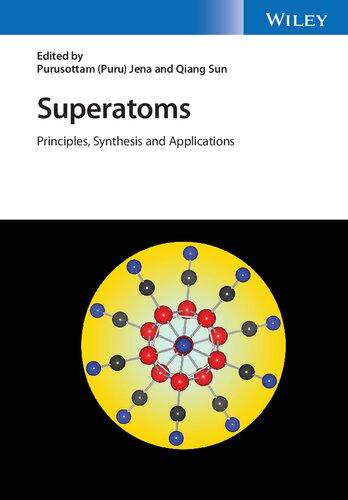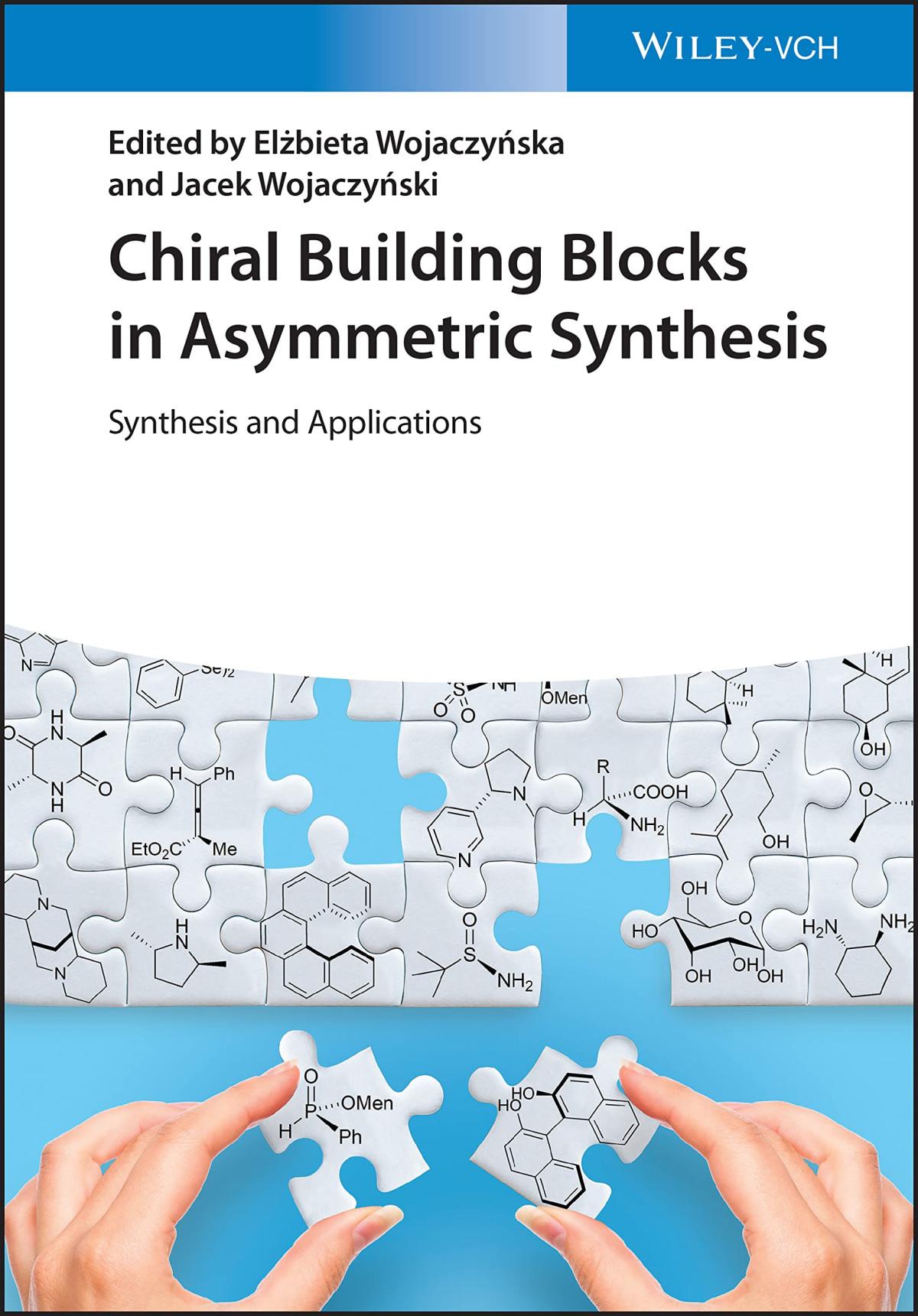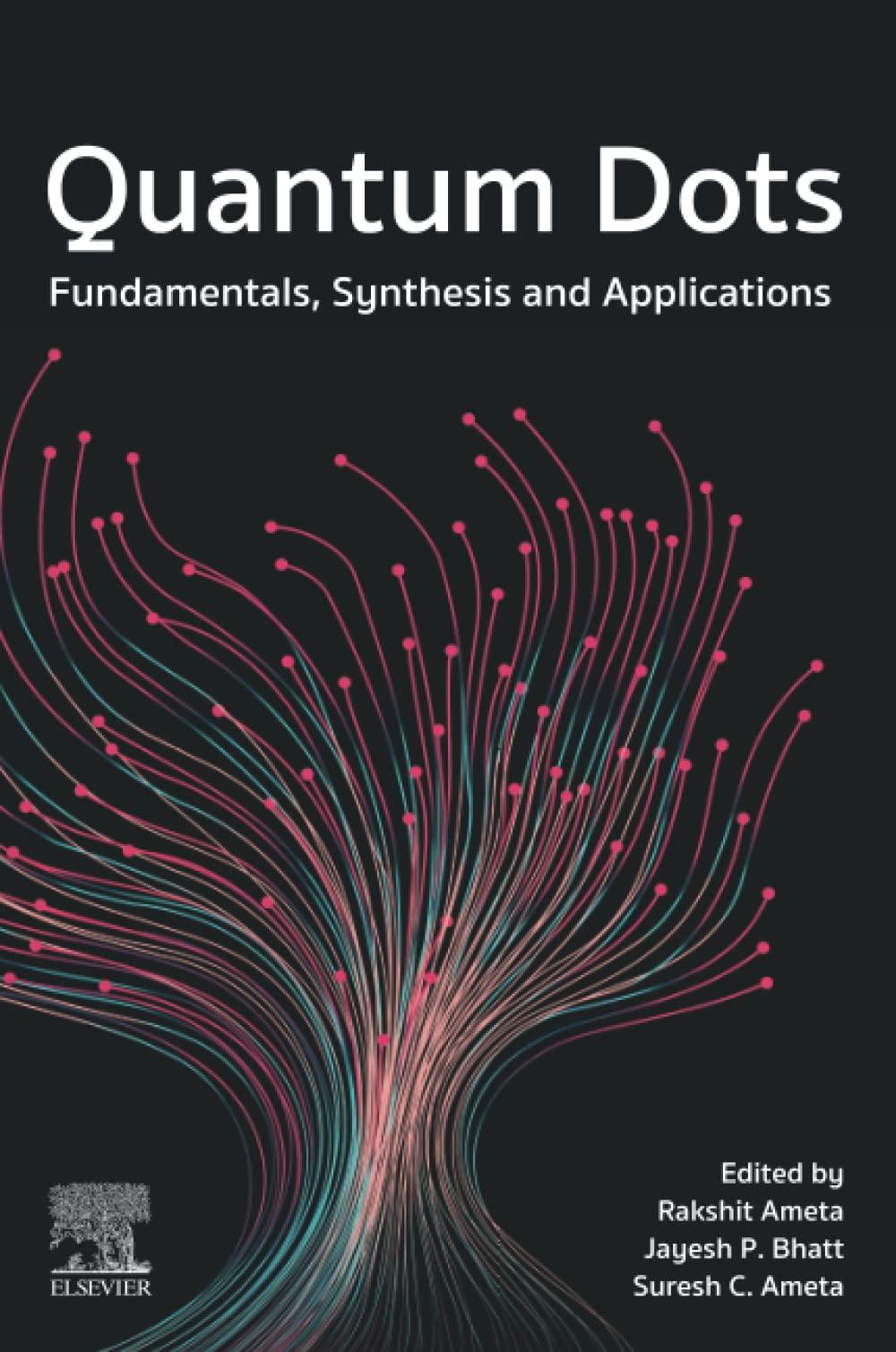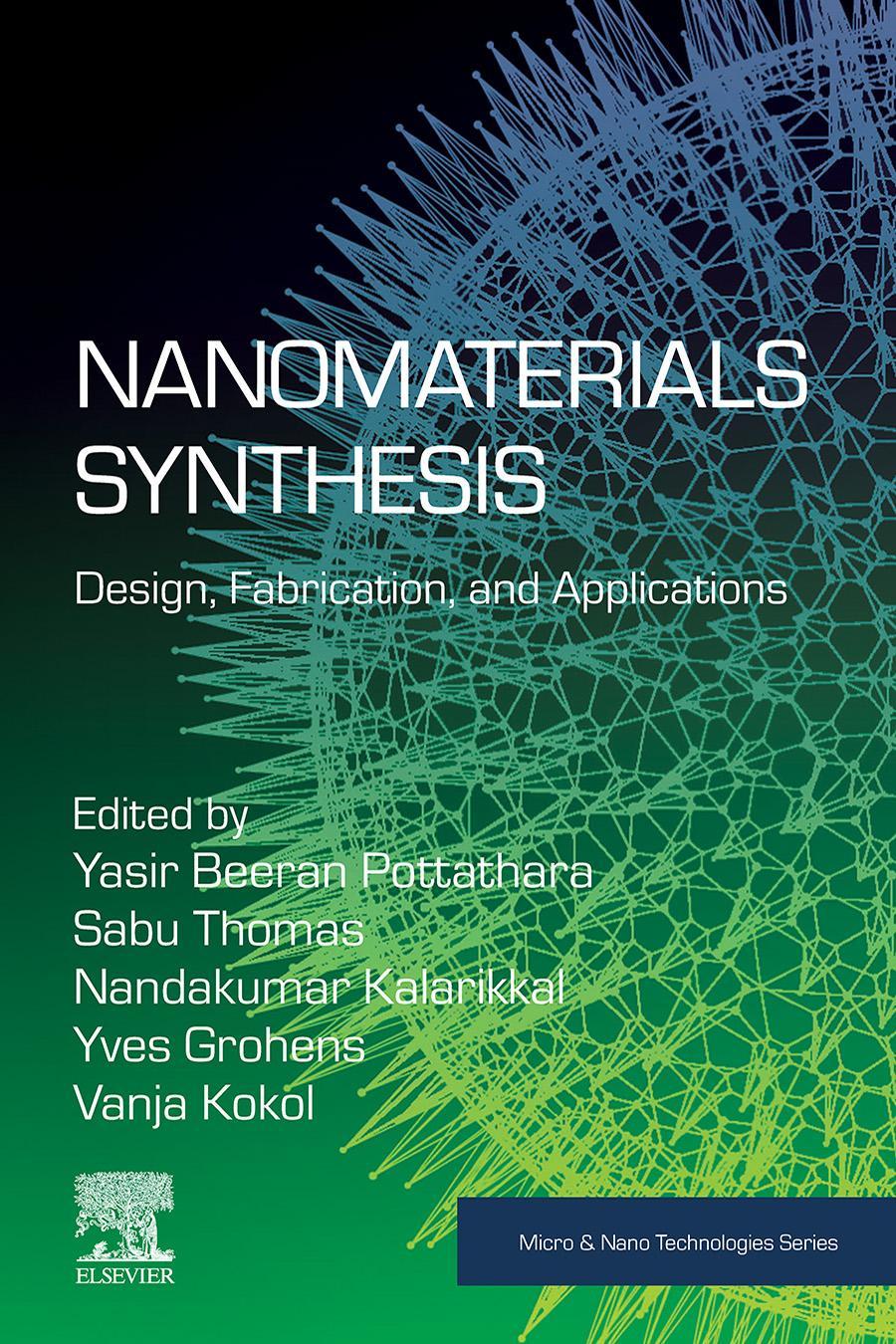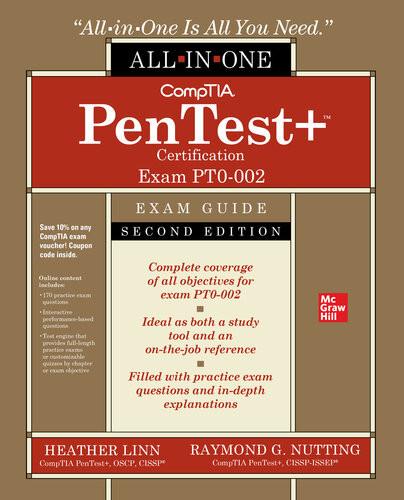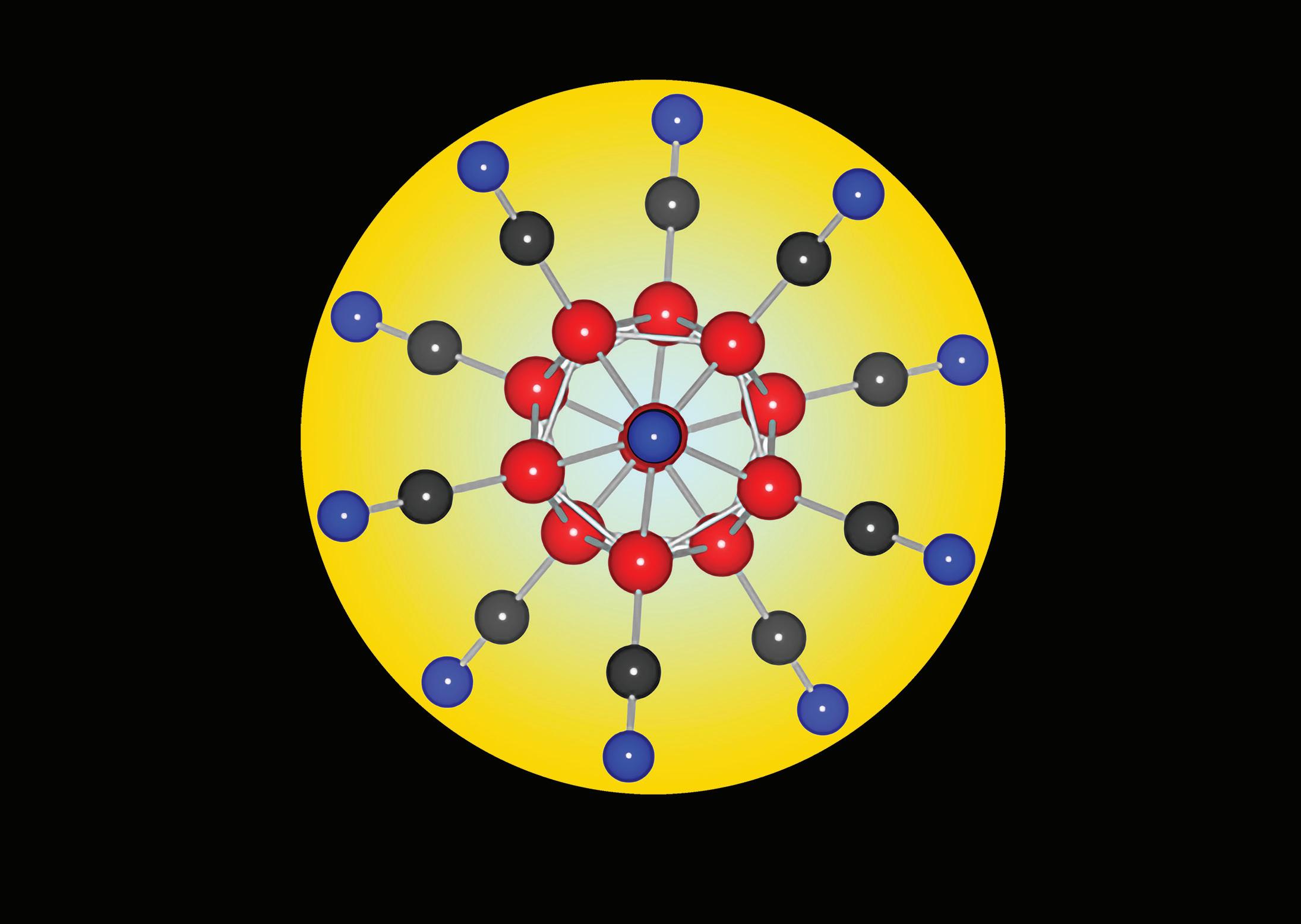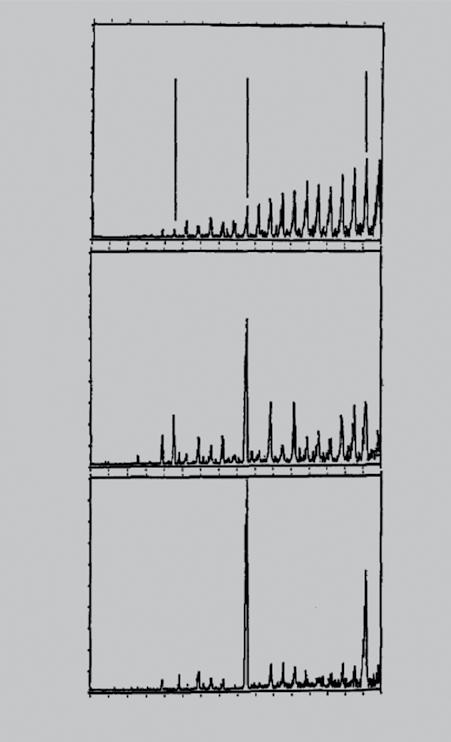Superatoms
Superatoms
Principles, Synthesis and Applications
Edited by Purusottam (Puru) Jena
Virginia Commonwealth University, Richmond, VA, USA
Qiang Sun
Peking University, Beijing, China
This edition first published 2022 © 2022 John Wiley & Sons Ltd
All rights reserved. No part of this publication may be reproduced, stored in a retrieval system, or transmitted, in any form or by any means, electronic, mechanical, photocopying, recording or otherwise, except as permitted by law. Advice on how to obtain permission to reuse material from this title is available at http://www.wiley.com/go/permissions.
The right of Purusottam (Puru) Jena and Qiang Sun to be identified as the authors of the editorial material in this work has been asserted in accordance with law.
Registered Offices
John Wiley & Sons, Inc., 111 River Street, Hoboken, NJ 07030, USA
John Wiley & Sons, Ltd., The Atrium, Southern Gate, Chichester, West Sussex, PO19 8SQ, UK
Editorial Office
The Atrium, Southern Gate, Chichester, West Sussex, PO19 8SQ, UK
For details of our global editorial offices, customer services, and more information about Wiley products visit us at www.wiley.com.
Wiley also publishes its books in a variety of electronic formats and by print-on-demand. Some content that appears in standard print versions of this book may not be available in other formats.
Limit of Liability/Disclaimer of Warranty
In view of ongoing research, equipment modifications, changes in governmental regulations, and the constant flow of information relating to the use of experimental reagents, equipment, and devices, the reader is urged to review and evaluate the information provided in the package insert or instructions for each chemical, piece of equipment, reagent, or device for, among other things, any changes in the instructions or indication of usage and for added warnings and precautions. While the publisher and authors have used their best efforts in preparing this work, they make no representations or warranties with respect to the accuracy or completeness of the contents of this work and specifically disclaim all warranties, including without limitation any implied warranties of merchantability or fitness for a particular purpose. No warranty may be created or extended by sales representatives, written sales materials, or promotional statements for this work. The fact that an organization, website, or product is referred to in this work as a citation and/or potential source of further information does not mean that the publisher and authors endorse the information or services the organization, website, or product may provide or recommendations it may make. This work is sold with the understanding that the publisher is not engaged in rendering professional services. The advice and strategies contained herein may not be suitable for your situation. You should consult with a specialist where appropriate. Further, readers should be aware that websites listed in this work may have changed or disappeared between when this work was written and when it is read. Neither the publisher nor authors shall be liable for any loss of profit or any other commercial damages, including but not limited to special, incidental, consequential, or other damages.
Library of Congress Cataloging-in-Publication data applied for:
HB ISBN: 9781119619529
Cover Design: Wiley
Cover Image: © American Chemical Society
Set in 9.5/12.5pt STIXTwoText by Straive, Pondicherry, India
Contents
Preface xi
List of Contributors xiii
1 Introduction 1
Puru Jena and Qiang Sun References 7
2 Rational Design of Superatoms Using Electron-Counting Rules 15
Puru Jena, Hong Fang, and Qiang Sun
2.1 Introduction 15
2.2 Electron-Counting Rules 17
2.2.1 Jellium Rule 17
2.2.2 Octet Rule 24
2.2.2.1 Superalkalis and Superhalogens 25
2.2.2.2 Superchalcogens 27
2.2.3 18-Electron Rule 29
2.2.4 32-Electron Rule 30
2.2.5 Aromaticity Rule 31
2.2.6 Wade-Mingos Rule 34
2.3 Stabilizing Negative Ions Using Multiple Electron-Counting Rules 37
2.3.1 Monoanions 37
2.3.2 Dianions 41
2.3.3 Trianions 43
2.3.4 Tetra-Anions and Beyond 44
2.4 Conclusions 46 References 46
3 Superhalogens – Enormously Strong Electron Acceptors 53
Piotr Skurski
3.1 Superhalogen Concept 53
3.1.1 Early Studies 53
3.1.2 Further Research (until 1999) 55
3.1.3 First Measurement of Gas-Phase Experimental Electron Detachment Energies 57
3.1.4 The Performance of Theoretical Treatments in Estimating VDEs 58
3.2 Alternative Superhalogens 61
3.2.1 Nonmetal Central Atoms 62
3.2.2 Nonhalogen Ligands 63
3.2.3 Beyond the MXk + 1 Formula 66
3.2.4 Superhalogens as Ligands 68
3.3 Polynuclear Systems and the Search for EA and VDE Limits 70
3.3.1 Polynuclear Superhalogens 71
3.3.2 Search for EA and VDE Limits 74
3.3.3 Magnetic Superhalogens 76
3.4 Superhalogens’ Applications at a Glance 77
3.5 Final Remarks 78 Acknowledgements 79References 79
4 Endohedrally Doped Superatoms and Assemblies 85
Vijay Kumar
4.1 Introduction 85
4.2 Magic Clusters and Their Electronic Stability 88
4.3 Discovery of Silicon Fullerenes and Other Polyhedral Forms 89
4.4 Endohedral Superatoms of Ge, Sn, and Pb 97
4.5 Magnetic Superatoms 101
4.6 Endohedral Clusters of Group 11 Elements 101
4.7 Endohedral Clusters of B, Al, and Ga 104
4.8 Hydrogenated Silicon Fullerenes 107
4.9 Compound Superatoms and Other Systems 108
4.10 Assemblies of Superatoms 110
4.11 Concluding Remarks 117 Acknowledgements 117 References 118
5 Magnetic Superatoms 129
Nicola Gaston
5.1 Introduction 129
5.2 The Arrival of the Magnetic Superatom 130
5.3 Tunable Superatoms 133
5.4 The Delocalisation of d-electrons 134
5.5 Prospects for Nanostructured Magnetic Material Design 137 References 138
6 Atomically Precise Synthesis of Chemically Modified Superatoms 141
Shinjiro Takano and Tatsuya Tsukuda
6.1 Introduction 141
6.1.1 The Concept of Superatoms 141
6.1.2 Chemically Modified Au/Ag Superatoms 142
6.2 Electronic Structures of Chemically Modified Superatoms 147
6.2.1 Size Effects 147
6.2.2 Composition Effects 151
6.2.3 Shape Effects 153
6.3 Atomically Precise Synthesis of Chemically Modified Superatoms 160
6.3.1 Size Control 160
6.3.1.1 Top-down Approach: Size Focusing 161
6.3.1.2 Bottom-up Approach: Size Convergence 163
6.3.1.3 Template Method 168
6.3.1.4 Kinetic Control 168
6.3.2 Composition Control 169
6.3.2.1 Co-reduction Method 169
6.3.2.2 Antigalvanic Method 170
6.3.2.3 Hydride-Mediated Transformation 172
6.3.3 Shape Control 172
6.3.4 Surface Control 174
6.3.4.1 Ligand Exchange 174
6.3.4.2 Hydrogen-Mediated Transformation 176
6.4 Summary 176
References 177
7 Atomically Precise Noble Metals in the Nanoscale, Stabilized by Ligands 183 Hannu Häkkinen
7.1 Introduction 183
7.2 Fundamentals 184
7.2.1 Free Electron Model and the Kubo Gap 184
7.2.2 Electron Shell Structure 185
7.2.3 Ligand-Stabilized Metal Clusters as Superatoms 188
7.2.3.1 Case Study: The (Ag44(SR)30)4− Superatom 188
7.2.4 Transition from Electronic to Atomic Shells 191
7.3 Applications 194
7.3.1 Catalysis 194
7.3.2 Biological and Medical Applications 199
7.3.2.1 Case Study: Imaging of Enteroviruses 200
7.3.3 Self-Assembling Cluster Materials from Superatoms 201
7.3.3.1 Case Study: Polymeric 1D Cluster Materials 203
7.4 Summary and Outlook 205
References 206
8 Superatoms as Building Blocks of 2D Materials 209 Zhifeng Liu
8.1 Introduction 209
8.2 Fullerene-assembled 2D Materials 211
8.2.1 C60-assembled Monolayer 211
8.2.1.1 Freestanding vdW C60 Monolayer 212
8.2.1.2 Freestanding Covalent Polymerized C60 Monolayer 213
8.2.2 Cn (n = 20, 26, 32, 36)-assembled Monolayers 217
8.2.3 Fullerene Monolayers on Substrates 220
8.3 Si-based Cluster Assembled 2D Materials 223
8.3.1 V@Si12 Assembled 2D Monolayer 223
8.3.1.1 Structure and Stability 223
8.3.1.2 Electronic and Ferromagnetic Properties 224
8.3.2 Other TM@Si12 Assembled 2D Monolayers 225
8.3.3 Ta@Si16 Assembled 2D Monolayer and That on Substrate 226
8.4 Binary Semiconductor Cluster Assembled 2D Materials 231
8.4.1 Cd6Se6 Assembled Sheets 232
8.4.2 X12Y12 Cage Cluster Assembled Monolayer 235
8.5 Simple and Noble Metal Cluster-assembled 2D Materials 236
8.5.1 Mg7 Assembled Monolayer 236
8.5.2 Au9 and Pt9 Assembled Square Monolayer 237
8.6 Zintl-ion Cluster-assembled 2D Materials 240
8.6.1 Ge9 Ion Cluster Monolayer 240
8.6.2 Ti@Au12 Ion Cluster Monolayer 241
8.7 Chevrel Cluster-Assembled 2D Materials 243
8.7.1 Re6Se8 Cluster-based Monolayer 243
8.7.2 Co6Se8 Cluster-based Monolayer 245
8.8 Summary and Future Perspectives 247 References 249
9 Superatom-Based Ferroelectrics 257
Menghao Wu and Puru Jena
9.1 Introduction 257
9.2 Organic Ferroelectrics 258
9.3 Hybrid Organic-Inorganic Perovskites 262
9.4 Supersalts 266
9.5 Conclusion 270 References 270
10 Cluster-based Materials for Energy Harvesting and Storage 277
Puru Jena, Hong Fang, and Qiang Sun
10.1 Introduction 277
10.2 Cluster-based Materials for Moisture-resistant Hybrid Perovskite Solar Cells 283
10.3 Cluster-based Materials for Optoelectronic Devices 287
10.4 Cluster-based Materials for Solid-state Electrolytes in Li-and Na-ion Batteries 287
10.4.1 Halogen-free Electrolytes 289
10.4.2 Cluster-based Antiperovskites for Electrolytes in Li-ion Batteries 292
10.4.3 Cluster-based Antiperovskites for Electrolytes in Na-ion Batteries 297
10.5 Cluster-based Materials for Hydrogen Storage 300
10.5.1 Hydrogen Interaction Mechanism 300
10.5.2 Intermediate States 303
10.5.3 Catalysts for Lowering the Dehydrogenation Temperature 305
10.6 Clusters Promoting Unusual Reactions 305
10.6.1 Zn in +III Oxidation State 307
10.6.2 Covalent Binding of Noble Gas Atoms 307
10.7 Conclusions 310 References 311
11 Thermal and Thermoelectric Properties of Cluster-based Materials 317 Tingwei Li, Qiang Sun, and Puru Jena
11.1 Introduction 317
11.2 Basic Theory 318
11.2.1 Thermoelectric Effect 318
11.2.2 Material Performance 319
11.2.3 Tuning ZT by Carrier Concentration 320
11.2.4 Tuning ZT by Electronic Structure 321
11.2.4.1 Carrier Effective Mass, m* 321
11.2.4.2 Carrier Mobility 322
11.3 Low Lattice Thermal Conductivity of Cluster-based Materials 323
11.3.1 Crystal Complexity of Cluster-based Materials 324
11.3.2 Chemical Bond Hierarchy in Cluster-based Materials 325
11.3.3 Structural Disorder in Cluster-based Materials 326
11.3.4 Orientational Disorder in Cluster-based Materials 327
11.3.4.1 Co6E8(PEt3)6 and [Co6E8(PEt3)6][C60]2 328
11.3.4.2 Fullerene Assembled Films 329
11.4 Thermoelectric Properties of some Selected Cluster-based Materials 330
11.4.1 Mo6 and Mo9 Cluster-based Selenides 330
11.4.1.1 Crystal Structures 330
11.4.1.2 Electronic Structures 331
11.4.1.3 Thermal Properties 332
11.4.1.4 Thermoelectric Figure of Merit ZT 334
11.4.2 Boron-based Cluster Materials 334
11.4.2.1 Crystal Structures 335
11.4.2.2 Thermoelectric Properties 335
11.4.3 Silver-based Cluster Materials 338
11.5 Conclusion 341 References 342
12 Clusters for CO2 Activation and Conversion 349 Haoming Shen, Qiang Sun, and Puru Jena
12.1 Introduction 349
12.2 Superalkali Catalysts 351
12.2.1 Li-based Superalkalis for CO2 Activation 351
12.2.2 Supported or Embedded Superalkalis for CO2 Capture 358
Contents x
12.3 Al-based Clusters for CO2 Capture 359
12.4 Ligand-protected Au25 Clusters for CO2 Conversion 361
12.5 M@Ag24 Clusters for CO2 Conversion 364
12.6 Cu-based Clusters for CO2 Conversion 367
12.7 Metal Encapsulated Silicon Nanocages for CO2 Conversion 370
12.8 Summary and Perspectives 370
References 372
13 Conclusions and Future Outlook 375
Puru Jena and Qiang Sun
Index 379
Preface
One of chemistry’s biggest contribution to science and society is the Mendeleev’s periodic table of elements. Created in 1869 before the discovery of the electron and the knowledge of quantum mechanics, the periodic table accounts for the chemistry of elements in terms of their valence electrons. At present, the periodic table contains 118 elements, 94 of which occur in nature. Atoms of these naturally occurring elements are the building blocks of all matter. For ages, alchemists have tried to alter the chemistry of elements with the hope of transforming, for example, base metals to gold, but to no avail. With the knowledge we have gained over more than a century, we now ask the question: Can we achieve an alchemist’s dream? Progress in nanoscience over the past few decades has provided some hope. As matter is reduced to nanometer or even sub-nanometer length scale, surface atoms dominate over bulk atoms. Combined with quantum confinement and reduced coordination, nanomaterials possess properties not seen in their bulk phase.
Atomic clusters, composed of a few to a few hundred atoms, are the ultimate nanoparticles where every atom counts. Research over the past 50 years has shown that properties of clusters are size- and composition-specific and can be tailored such that they mimic the chemistry of elements in the periodic table, even when none of their constituents belong to that group. Such clusters, termed as superatoms, can be used to build a three-dimensional periodic table where superatoms constitute the third dimension. Because there are unlimited ways of designing these superatoms, the three-dimensional periodic table will have no limits, at least in principle. Can properties of matter be fundamentally altered if we change their building blocks from individual atoms to these superatomic clusters? For example, can a superatomic cluster containing only nonmagnetic atoms be magnetic? Can a cluster composed of metal atoms behave like a semiconductor? Can noble gas atoms and inert molecules form chemical bonds with tailored superatoms? Can a cluster of gold atoms be reactive? This book examines these possibilities.
Although the field of atomic clusters can be traced to 1930s, it became attractive to the physics and chemistry community in 1970s when clusters of atoms and molecules with specific size and composition could be produced in the gas phase and studied both experimentally and theoretically. The motivation for studying clusters at the dawn of this field was to understand how properties of matter evolve, one atom at a time. It was soon realized that the structure and properties of atomic clusters not only are very different from their bulk matter but also evolve non-monotonically, often varying unpredictably and abruptly with the addition of a single atom. In contrast to conventional materials composed of
individual atoms, new matter with tailored properties can be created by using these superatoms as the building blocks, primarily because of their unique size, shape, composition, and electronic structure. For example, lattice constants of cluster-assembled crystals would be larger than those of conventional crystals. The energy bands of cluster-assembled crystals formed by the overlap of superatomic orbitals would be different from the conventional energy band structure formed by the overlap of atomic orbitals. The nonspherical geometry of clusters would introduce novel features as their rotational degree of freedom can affect the energy landscape. Similarly, intra-cluster and inter-cluster vibrations would further affect the electron–phonon interaction. This paradigm shift in materials design and synthesis would open new doors for focused discovery of materials with unprecedented properties.
This book contains 13 chapters covering the recent advances in our understanding of superatoms and their assemblies. A group of international experts discuss the design of superatoms, study properties that make these unique, and explore their potential as building blocks of a new class of materials with applications in devices and energy-related technologies. Chapter 1 highlights some seminal papers and reviews on atomic clusters that made cluster science an emerging field bridging physics, chemistry, and materials science. Chapter 2 shows how superatoms mimicking the properties of group 1, 15, 16, and 17 elements can be rationally designed using electron-counting rules. Also discussed in this chapter is how different electron-counting rules can be used simultaneously to design multiply charged superatoms that neither fragment nor spontaneously eject the added electrons. Such superatoms can be used to promote unusual reactions enabling noble gas atoms such as argon to form chemical bonds at room temperature. Chapter 3 provides a comprehensive review of superhalogens that mimic the chemistry of halogens but possess electron affinities far exceeding those of halogen atoms. The design, stability, and structure-property relationships of endohedral clusters where metal atoms are encapsulated inside cage clusters composed of Si, Ge, Sn, and coinage metal atoms are discussed in Chapter 4. Also discussed in this chapter are assemblies of these metal encapsulated clusters. Chapter 5 shows how magnetic superatoms that mimic the properties of transition and rare earth metal atoms can be created by tailoring the role of s and p electrons that account for bonding while d and f electrons carry the magnetic moment. Chapters 6 and 7 cover the experimental and theoretical aspects of cluster-assembled materials focusing on atomically precise ligand-protected clusters composed of noble metal atoms. Twodimensional materials created with superatoms as the building blocks are presented in Chapter 8. Potential applications of superatom-based materials in ferroelectrics, solar cells, Li-ion batteries, hydrogen storage, and capture and conversion of CO2 are covered in Chapters 9–12. The challenges and opportunities that lie ahead are summarized in the concluding chapter. Cluster science in general and superatoms in particular are expected to remain a vibrant field for years to come, leading the way to new developments in materials design, synthesis, and applications.
Puru Jena Qiang Sun
List of Contributors
Hong Fang
Department of Physics, Virginia Commonwealth University, Richmond, VA, USA
Nicola Gaston
The MacDiarmid Institute for Advanced Materials and Nanotechnology, Department of Physics, The University of Auckland, Auckland, New Zealand
Hannu Häkkinen
Departments of Physics and Chemistry, Nanoscience Center, University of Jyväskylä, Jyväskylä, Finland
Purusottam (Puru) Jena
Department of Physics, Virginia Commonwealth University, Richmond, VA, USA
Vijay Kumar
Center for Informatics, School of Natural Sciences, Shiv Nadar University, Tehsil Dadri, Uttar Pradesh, India
Dr. Vijay Kumar Foundation, Gurgaon, Haryana, India
Tingwei Li
School of Materials Science and Engineering, Peking University, Beijing, China
Center for Applied Physics and Technology, Peking University, Beijing, China
Zhifeng Liu
School of Physical Science and Technology, Inner Mongolia University, Hohhot, Inner Mongolia, China
Haoming Shen
School of Materials Science and Engineering, Peking University, Beijing, China
Center for Applied Physics and Technology, Peking University, Beijing, China
Piotr Skurski
Laboratory of Quantum Chemistry, Faculty of Chemistry, University of Gdańsk, Gdańsk, Poland
Henry Eyring Center for Theoretical Chemistry, Department of Chemistry, University of Utah, Salt Lake City, UT, USA
Qiang Sun
School of Materials Science and Engineering, Peking University, Beijing, China
Center for Applied Physics and Technology, Peking University, Beijing, China
List of Contributors
Shinjiro Takano
Department of Chemistry, School of Science, The University of Tokyo, Tokyo, Japan
Tatsuya Tsukuda
Department of Chemistry, School of Science, The University of Tokyo, Tokyo, Japan
Elements Strategy Initiative for Catalysts and Batteries (ESICB), Kyoto University, Kyoto, Japan
Menghao Wu
School of Physics, Huazhong University of Science and Technology, Wuhan, Hubei, China
Introduction
Puru Jena1 and Qiang Sun2,3
1 Physics Department, Virginia Commonwealth University, Richmond, Virginia, USA
2 School of Materials Science and Engineering, Peking University, Beijing, China
3 Center for Applied Physics and Technology, Peking University, Beijing, China
Atomic clusters are a group of homo- or hetero-nuclear atoms that form in the gas phase when a hot plume of atoms cool through collisions with noble gas atoms. Once mass is isolated in a quadrupole or time of flight mass spectrometer, these clusters are studied with atomic precision. Although both molecules and atomic clusters are composed of a group of atoms, the similarity ends there. Molecules are found in nature and are stable under ambient conditions, while clusters are produced in the laboratory and are stable only when held in isolation. In addition, unlike molecules, clusters of any size and composition, in principle, can be formed. The early motivation for studying clusters was to understand how properties of matter evolve, one atom at a time. It was soon realized that the structure and properties of clusters are unique and do not resemble their bulk properties until their sizes are very large. Equally important, their properties vary nonmonotonically and unpredictably with size, shape, and composition. This realization gave clusters their own identity, and they came to represent a new phase of matter intermediate between the atoms and their bulk matter. The field of cluster science, born over half a century ago, has attracted scientists from different disciplines to study, understand, and manipulate their properties by changing size, shape, composition, charge, and environment [1–136]. More than 200 000 papers have appeared in this field with about 10 000 papers appearing per year over the past decade. Clusters now bridge disciplines, and their role in the design and synthesis of novel materials with tailored properties is the subject of this book.
In 1992 in an article in Physical Review Letters, Shiv Khanna and Puru Jena showed that a cluster with specific size and composition could mimic the properties of an element in the periodic table and named such a cluster as a “superatom” [137]. They further suggested that these superatoms could be used to build a three-dimensional periodic table with superatoms forming the third dimension [138]. Furthermore, a new class of materials, called “cluster-assembled materials” [138], can be formed by using superatomic clusters as building blocks, much as conventional materials are formed by using atoms as building blocks. This concept originated from a seminal experiment in the field of cluster science by Walter
Superatoms: Principles, Synthesis and Applications, First Edition. Edited by Purusottam (Puru) Jena and Qiang Sun. © 2022 John Wiley & Sons Ltd. Published 2022 by John Wiley & Sons Ltd.
Introduction 2
Knight and his group in 1984 [139]. These authors measured the mass spectra of Na clusters and observed that clusters containing 2, 8, 20, 40, atoms are more abundant than their neighbors (see Figure 1.1). They noted that the nuclei with the same number of nucleons were already known to be very stable. In analogy with the nuclear physics, the authors termed these very stable clusters as magic clusters and showed that the origin of the magic numbers in Na clusters is due to electronic shell closure, just as the magic numbers in nuclei are due to nuclear shell closure.
Knight et al. described the electronic shell structure of Na clusters using the jellium model where the clusters were assumed to have spherical symmetry with the charges of the positive ion core distributed uniformly inside the sphere (see Figure 1.2) [140]. They assumed that valence electrons in Na clusters would behave like free electrons, similar to the conduction electrons in a Na metal. In the jellium model of a cluster, the charge density n+(r) of the positive ions is given by,
C ounting ra te
Figure 1.1 Sodium cluster abundance spectrum, (a) experimental data of Knight et al. (b) Second derivative of the total energy, dashed line using Woods-Saxon potential; solid line using the ellipsoidal shell (Clemenger-Nilsson model). Source: Adapted with permission from Ref. [130].
Copyright 1993 American Physical Society.
Figure 1.2 Schematic diagram of an atom and atomic orbitals (left panel) where the positively charged nucleus is localized at a point, and jellium model of a cluster where the positive charge is smeared over a sphere of finite radius with corresponding electronic orbitals (right panel).
Source: Adapted with permission from Ref. [140]. Copyright 2013 American Chemical Society.
Lorem ipsum
Clusters

where n0 is the density of the positive charge and R is the radius of the sphere. Θ(r − R) = 1 for r ≤ R and Θ(r − R) = 0 for r > R. The electrons responding to this charge distribution occupy orbitals similar to those in the atoms. The major difference is that in this case the orbitals of clusters are characterized as 1S 1P 1D 2S 1F 2P . shells. Because the number of free electrons in a Na cluster is equal to the number of Na atoms, the magic numbers observed in Na clusters, namely 2, 8, 20, 40, correspond to electronic shell closure of 1S2, 1S2 1P6, 1S2 1P6 1D10 2S2, 1S2 1P6 1D10 2S2 1F14 2P6, . orbitals, respectively. The validity of the jellium model has since been established in simple as well as noble metals. Of particular note is the Al13 cluster, which contains 40 electrons. Will Castleman and coworkers noted that Al13 with a conspicuous peak in the mass spectra is indeed a very stable cluster [141] and is much less reactive toward oxygen than the neighboring clusters (Figure 1.3). In addition, Al13, having an icosahedral geometry, also represents an atomically shell closed structure. The extraordinary stability of Al13 , therefore, derives from both electronically and atomically closed shell system.
The above findings led Khanna and Jena to propose that neutral Al13 cluster, with 39 electrons should behave the same way as a halogen atom, as both need one extra electron to close their electronic shells, the former being consistent with the jellium rule and the latter being consistent with the octet rule [137]. Indeed, calculations and experiments showed that the electron affinity of Al13, namely 3.57 eV, is identical to that of Cl [142, 143]. That Al13 mimics the chemistry of halogens that was later shown theoretically [144] by studying its interaction with K. KAl13 was shown to be an ionically bonded cluster just like KCl. Experimental confirmation that KAl13 is indeed ionically bonded validates the superatom concept [145].
For the sake of history, it should be mentioned that properties of clusters have been linked to atoms as early as 1981 when Gutsev and Boldyrev [146] showed that the electron affinity of a cluster with composition MXk + 1, where M is a metal atom with valence k and X is a halogen atom, can exceed that of a halogen atom. Note that MXk + 1 cluster, just like a halogen atom, would need an extra electron to close its electronic shell. Because the size
Atoms
Figure 1.3 Series of mass spectra showing progression of the etching reaction of Al anions with oxygen in 0.0 SCCM (a), 7.5 SCCM (b), and 10.0 SCCM s(c). Source: Leuchtner, et al. [141]. © AIP Publishing.
of MXk + 1 cluster is larger than that of a halogen atom, the Coulomb repulsion experienced by the extra electron decreases as the size increases. Hence, the electron affinity of MXk + 1 is larger than that of X. The authors coined the word “superhalogen” to describe these clusters. In a subsequent publication, Gutsev and Boldyrev also showed that the ionization potential of a cluster with composition Mk + 1X is less than that of the alkali atom, M where k is the valence of atom X, and coined the word “superalkali” to describe these clusters. Thus, superhalogens and superalkalis that mimic the chemistry of alkali and halogen atoms in the periodic table, respectively, can be regarded as the first demonstration of what is now commonly termed as “superatoms.” Figure 1.4 shows an example of a threedimensional periodic table where superhalogens and superalkalis constitute the third dimension representing Group 1 and Group 17 elements [147].
A few years later, Saito and Ohnishi [148] noted that Na8 satisfying electronic shell closure (1S2 1P6) according to the jellium model should be chemically inert like the noble gas atoms, which have their outermost s and p shells closed. Similarly, Na19 lacks an electron
Figure 1.4 Three-dimensional periodic table with superatoms mimicking the chemistry of halogens and alkalis. Examples are those of superalkalis designed using the octet rule (Li3O, Na3O, K3O, Rb3O, Cs3O) and jellium rule (Al3) and superhalogens designed using the octet rule (AuF6, LiF3, MnCl3, BO2) and Wade-Mingos rule (B12H13).
to achieve electronic shell closure and should behave like a halogen atom. The authors termed these as “giant atoms.” However, atomic clusters neither have spherical geometries nor do their electrons behave as if they are free electrons. On the contrary, the electrons are confined within the cluster. A later calculation that took explicit account of the cluster geometry showed that Na8 retains its geometry up to 600 K on a NaCl substrate, but it spontaneously collapses forming an epitaxial layer on a Na (110) surface [149]. When two Na8 clusters interact, instead of remaining as individual clusters, they coalesce and form a Na16 cluster. Similarly, no evidence exists to demonstrate that Na19 can form a salt-like molecule, analogous to KAl13, while interacting with an alkali atom.
In later years, superatoms have been described in terms of their molecular orbital structures specific to their optimized geometries. Instead of using the jellium model and identifying superatoms as they fill the jellium orbitals, superatoms are regarded as a single unit with their molecular orbitals filled much the same way as electrons fill orbitals of a single atom. The chemistry of the superatoms is then determined by the outer molecular orbitals. As an example, consider Al13I2 [150]. Since Al13 behaves as a halogen, one could regard Al13I2 mimicking a triiodide I3 ion. Indeed, the outer electronic orbitals of Al13I2 and I3 ion have similar features. Similarly, Al14I can be viewed as Al142+.3I , where Al142+ behaves like an alkaline-earth element. Considerable research over the past couple of decades has led to the design of superatoms using electron counting rules such as the octet rule, the 18-electron rule, Hückel’s aromatic rule, and the Wade-Mingos rule [147].
Superhalogen
“Magnetic superatoms,” the name coined by Vijay Kumar and Yoshi Kawazoe [151], is another example of how a cluster could possess a magnetic moment just as transition and rare earth metal atoms do. An early realization of this concept dates back to the work of Rao et al. [152] who showed a Li4 cluster confined to a tetrahedral geometry has a total spin 1 while its rhombus ground state structure has a total spin 0. That the geometry of a cluster can be linked to its underlying spin structure gives scientists an unprecedented opportunity to design magnetic superatoms where the constituent atoms are not even magnetic. Similarly, clusters of antiferromagnetic elements such as Mn can be ferromagnetic while the magnetic moments of transition metal clusters can far exceed that of their bulk value [153].
Knowing that superatoms can have properties different from the atoms, one can envision a new class of materials where these superatomic clusters are used as building blocks. One of the basic requirements for this purpose is that the superatomic clusters must be stable when assembled to a form a bulk material. This class of materials is called “clusterassembled materials.” The advantage of cluster-assembled materials over atom-assembled materials is that their underlying electronic structure is different from the electronic structure of atoms. In Figure 1.5 we present the electronic orbitals of an Al atom and compare it to that of an Al13 superatom [140]. We note that the energy spacing between molecular orbitals and atomic orbitals as well as their degeneracies and energy gap between highest occupied and lowest unoccupied molecular orbitals (HOMO–LUMO) are different. As these energy levels overlap and broaden when individual atoms and superatoms are brought together, the resulting energy bands would be very different. Thus, the electronic structure of cluster-assembled materials would be different from that of atom-assembled materials, even though the cluster is composed of the same elemental atoms. A good example is crystals made of carbon atoms and that of C60 fullerene. Graphite, the ground state of
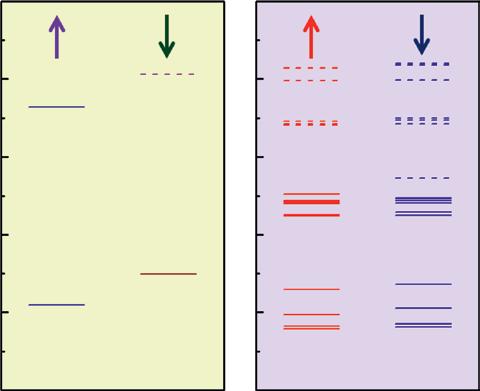
Figure 1.5 Spin polarized electron orbitals of Al atom (left panel) and the Al13 cluster (right panel). Source: Jena [140]. © American Chemical Society.
atom-assembled carbon is metallic and made of honeycomb arrangements of layers coupled weakly with each other. Fulleride, a crystal of C60, on the other hand, forms an insulating fcc lattice with weakly bonded C60 clusters. Alkalization of fulleride crystal gives rise to a superconductor while intercalation of graphite by alkali atoms does not. In addition to the different electronic structure between atoms and superatoms, there are other features that contribute to the unique properties of cluster-assembled materials. For example, in a conventional crystal there is only one length scale, namely the lattice constant, while in a cluster-assembled material, there are two length scales – the intra-cluster distance and the inter-cluster distance. Clusters due to their nonspherical shape can influence the potential energy surface due to their rotational degree of freedom, while in a conventional crystal, the atoms, being spherical, do not have that freedom. The phonons generated from the lattice vibration and their coupling with electrons can also render unusual properties depending upon whether the crystal has atoms vs superatoms as building blocks.
The central question then is: how to ensure that the superatoms retain their geometry after assembly? This can be accomplished in a number of ways: (i) The superatoms should be very stable (e.g., C60) and must not coalesce or deform as they come together to form a crystal. Electron counting rules as well as atomic shell closure rules can be used to identify such superatoms. Stability of clusters satisfying the jellium shell closure rule is one such scheme that is discussed in the above. However, stable superatoms can also be designed by satisfying other electron counting rules such as the octet rule for simple elements (s2 p6), the 18-electron rule for transition metal elements (s2 p6 d10), 32-electron rule for rare earth elements (s2 p6 d10 f14), the aromatic rule for organic molecules, and the Wade-Mingos rule for boron-based and Zintl clusters. (ii) Endohedral doping of metal atoms can also be used as an effective strategy to stabilize clusters. (iii) Atomic clusters can be soft-landed on a substrate and kept apart by limiting their density or (iv) coated with ligands that protect the core when assembled. In the latter two cases, it is likely that the substrate and the ligands can interact with the atomic clusters and can affect both their geometry and properties. Instead of viewing such interactions as undesired, they can be used to tailor the properties of atomic clusters by choosing the right substrate and the ligands.
In the following 11 chapters, various authors discuss how to design superatoms by using simple electron counting rules, how to stabilize them by endohedral doping of metal atoms, and how to protect them from coalescing with each other by coating them with suitable ligands, or soft-landing them on a chosen substrate to form cluster-based thin films. Cluster-assembled materials and how their properties can be tailored to produce novel catalysts, magnetic materials, and materials for energy production, storage, and conversion are also discussed. The concluding chapter describes outstanding problems and provides an insight into the future developments.
References
1 Becker, E.W., Bier, K., and Henkes, W. (1956). Strahlen aus kondensierten atomen und Molekeln im hochvakuum. Eur. Phys. J. A 146: 333–338.
2 Kubo, R. (1962). Electronic properties of metallic fine particles. I. J. Phys. Soc. Jpn. 17: 975–986.
3 Davenas, J. and Rabette, P. (1982). Contribution of clusters physics to materials science and technology. Proceedings of the NATO Advanced Study Institute on Impact of Clusters Physics in Materials Science and Technology, Cap d’Agde, France (1986).
4 Jena, P., Rao, B., and Khanna, S. (1987). Physics and Chemistry of Small Clusters Richmond, VA: Virginia Commonwealth University.
5 Jena, P., Khanna, S., and Rao, B. (1992). Physics and Chemistry of Finite Systems: From Clusters to Crystals. New York: Springer Science & Business Media.
6 Sugano, S. (1991). Microcluster Physics. New York: Springer.
7 Sattler, K. (1996). Cluster Assembled Materials. New York: CRC Press.
8 Duncan, M.A. (1998). Advances in Metal and Semiconductor Clusters: Cluster Materials New York: Elsevier.
9 Castleman, A.W. and Khanna, S.N. (2003). Quantum Phenomena in Clusters and Nanostructures. Berlin, Heidelberg: Springer.
10 Jena, P. and Castleman, A. Jr. (2010). Nanoclusters–A Bridge Across Disciplines. New York: Elsevier.
11 Chattaraj, P.K. (2010). Aromaticity and Metal Clusters. New York: CRC Press.
12 Campbell, E.E.B. (2011). Proceedings of Nobel Symposium. Sweden: World Scientific Publishing Co.
13 Alonso, J.A. (2012). Structure and Properties of Atomic Nanoclusters, 2e. River Edge, NJ: World Scientific.
14 Jellinek, J. (2012). Theory of Atomic and Molecular Clusters: With a Glimpse at Experiments. New York: Springer Science & Business Media.
15 Meiwes-Broer, K.-H. (2012). Metal Clusters at Surfaces: Structure, Quantum Properties, Physical Chemistry. New York: Springer Science & Business Media.
16 Milani, P. and Iannotta, S. (2012). Cluster Beam Synthesis of Nanostructured Materials. New York: Springer Science & Business Media.
17 Ciobanu, C.V., Wang, C.-Z., and Ho, K.-M. (2013). Atomic Structure Prediction of Nanostructures, Clusters and Surfaces. New York: John Wiley & Sons.
18 Kawazoe, Y., Kondow, T., and Ohno, K. (2013). Clusters and Nanomaterials: Theory and Experiment. New York: Springer Science & Business Media.
19 Heiles, S. and Schafer, R. (2014). Dielectric Properties of Isolated Clusters: Beam Deflection Studies. New York: Springer.
20 Tsukuda, T. and Hakkinen, H. (2015). Protected Metal Clusters: From Fundamentals to Applications. New York: Elsevier.
21 Chapon, C., Gillet, M.F., and Henry, C.R. (1989). Small Particles and Inorganic Clusters: Proceedings of the Fourth International Meeting on Small Particles and Inorganic Clusters University Aix-Marseille III Aix-en-Provence, France, 5–9 July 1988. New York: Springer Science & Business Media.
22 Jena, P. and Behera, S.N. (1996). Clusters and Nanostructured Materials. New York: Nova Publishers.
23 Jena, P., Khanna, S., and Rao, B. (1996). Proceedings of the Science and Technology of Atomically Engineered Materials: Richmond, Virginia, USA, Oct. 30–Nov. 4. Singapore: World Scientific.
24 Jena, P., Khanna, S., and Rao, B. (2000). Cluster and Nanostructure Interfaces. Singapore: World Scientific.
25 Jena, P., Khanna, S., and Rao, B. (2005). Clusters and Nano-Assemblies: Physical and Biological Systems. Singapore: World Scientific.
26 Sahu, S., Choudhury, R., and Jena, P. (2006). Nano-Scale Materials: From Science to Technology. New York: Nova Publishers.
27 Band, E. and Muetterties, E.L. (1978). Mechanistic features of metal cluster rearrangements. Chem. Rev. 78: 639–658.
28 Muetterties, E.L., Rhodin, T.N., Band, E. et al. (1979). Clusters and surfaces. Chem. Rev. 79: 91–137.
29 Beuhler, R. and Friedman, L. (1986). Larger cluster ion impact phenomena. Chem. Rev. 86: 521–537.
30 Castleman, A.W. and Keesee, R.G. (1986). Ionic clusters. Chem. Rev. 86: 589–618.
31 Koutecky, J. and Fantucci, P. (1986). Theoretical aspects of metal atom clusters. Chem. Rev. 86: 539–587.
32 Bonacic-Koutecky, V., Fantucci, P., and Koutecky, J. (1991). Quantum chemistry of small clusters of elements of groups Ia, Ib, and IIa: fundamental concepts, predictions, and interpretation of experiments. Chem. Rev. 91: 1035–1108.
33 Bonačić-Koutecký, V. and Mitrić, R. (2005). Theoretical exploration of ultrafast dynamics in atomic clusters: analysis and control. Chem. Rev. 105: 11–66.
34 Berry, R.S. (1993). Potential surfaces and dynamics: what clusters tell us. Chem. Rev. 93: 2379–2394.
35 Morse, M.D. (1986). Clusters of transition-metal atoms. Chem. Rev. 86: 1049–1109.
36 Fendler, J.H. (1987). Atomic and molecular clusters in membrane mimetic chemistry. Chem. Rev. 87: 877–899.
37 Jelski, D.A. and George, T.F. (1988). Clusters: link between molecules and solids. J. Chem. Educ. 65: 879–883.
38 Kappes, M.M. (1988). Experimental studies of gas-phase main-group metal clusters. Chem. Rev. 88: 369–389.
39 Weltner, W. and Van Zee, R.J. (1989). Carbon molecules, ions, and clusters. Chem. Rev. 89: 1713–1747.
40 Van Orden, A. and Saykally, R.J. (1998). Small carbon clusters: spectroscopy, structure, and energetics. Chem. Rev. 98: 2313–2358.
41 Kong, X.-J., Long, L.-S., Zheng, Z. et al. (2010). Keeping the ball rolling: fullerene-like molecular clusters. Acc. Chem. Res. 43: 201–209.
42 Adams, R.D. (1989). Metal cluster complexes containing heteroatom-substituted carbene. ligands. Chem. Rev. 89: 1703–1712.
43 Mingos, D.M.P., Slee, T., and Zhenyang, L. (1990). Bonding models for ligated and bare clusters. Chem. Rev. 90: 383–402.
44 Leutwyler, S. and Boesiger, J. (1990). Rare-gas solvent clusters: spectra, structures, and order-disorder transitions. Chem. Rev. 90: 489–507.
45 Chalasinski, G. and Szczesniak, M.M. (1994). Origins of structure and energetics of van der Waals clusters from ab Initio calculations. Chem. Rev. 94: 1723–1765.
46 Shang, Q.Y. and Bernstein, E.R. (1994). Energetics, dynamics, and reactions of Rydberg state molecules in van der Waals clusters. Chem. Rev. 94: 2015–2025.
47 Garvey, J.F., Herron, W.J., and Vaidyanathan, G. (1994). Probing the structure and reactivity of hydrogen-bonded clusters of the type {M}n{H2O}H+, via the observation of magic numbers. Chem. Rev. 94: 1999–2014.
48 Plesek, J. (1992). Potential applications of the boron cluster compounds. Chem. Rev. 92: 269–278.
49 Hawthorne, M.F. and Maderna, A. (1999). Applications of radiolabeled boron clusters to the diagnosis and treatment of cancer. Chem. Rev. 99: 3421–3434.
50 Schmid, G. (1992). Large clusters and colloids: metals in the embryonic state. Chem. Rev. 92: 1709–1727.
51 Parent, D.C. and Anderson, S.L. (1992). Chemistry of metal and semimetal cluster ions. Chem. Rev. 92: 1541–1565.
52 Brutschy, B. (1992). Ion-molecule reactions within molecular clusters. Chem. Rev. 92: 1567–1587.
53 Illenberger, E. (1992). Electron-attachment reactions in molecular clusters. Chem. Rev. 92: 1589–1609.
54 Hobza, P., Selzle, H.L., and Schlag, E.W. (1994). Structure and properties of benzenecontaining molecular clusters: nonempirical ab initio calculations and experiments. Chem. Rev. 94: 1767–1785.
55 Kim, K.S., Tarakeshwar, P., and Lee, J.Y. (2000). Molecular clusters of π-systems: theoretical studies of structures, spectra, and origin of interaction energies. Chem. Rev. 100: 4145–4186.
56 Sun, T. and Seff, K. (1994). Silver clusters and chemistry in zeolites. Chem. Rev. 94: 857–870.
57 Braga, D., Dyson, P.J., Grepioni, F., and Johnson, B.F.G. (1994). Arene clusters. Chem. Rev. 94: 1585–1620.
58 Gates, B.C. (1995). Supported metal clusters: synthesis, structure, and catalysis. Chem. Rev. 95: 511–522.
59 Alexeev, O.S. and Gates, B.C. (2003). Supported bimetallic cluster catalysts. Ind. Eng. Chem. Res. 42: 1571–1587.
60 Yachandra, V.K., Sauer, K., and Klein, M.P. (1996). Manganese cluster in photosynthesis: where plants oxidize water to dioxygen. Chem. Rev. 96: 2927–2950.
61 Bačić, Z. and Miller, R.E. (1996). Molecular clusters: structure and dynamics of weakly bound systems. J. Phys. Chem. 100: 12945–12959.
62 Ogino, H., Inomata, S., and Tobita, H. (1998). Abiological iron-sulfur clusters. Chem. Rev. 98: 2093–2122.
63 Henderson, R.A. (2005). Mechanistic studies on synthetic Fe−S-based clusters and their relevance to the action of nitrogenases. Chem. Rev. 105: 2365–2438.
64 Lee, S.C., Lo, W., and Holm, R.H. (2014). Developments in the biomimetic chemistry of cubane-type and higher nuclearity iron-sulfur clusters. Chem. Rev. 114: 3579–3600.
65 Desfrançois, C., Carles, S., and Schermann, J.P. (2000). Weakly bound clusters of biological interest. Chem. Rev. 100: 3943–3962.
66 Buck, U. and Huisken, F. (2000). Infrared spectroscopy of size-selected water and methanol clusters. Chem. Rev. 100: 3863–3890.
67 Rohmer, M.-M., Bénard, M., and Poblet, J.-M. (2000). Structure, reactivity, and growth pathways of metallocarbohedrenes M8C12 and transition metal/carbon clusters and nanocrystals: a challenge to computational chemistry. Chem. Rev. 100: 495–542.
68 Dedonder-Lardeux, C., Grégoire, G., Jouvet, C. et al. (2000). Charge separation in molecular clusters: dissolution of a salt in a salt−(solvent)n cluster. Chem. Rev. 100: 4023–4038.

